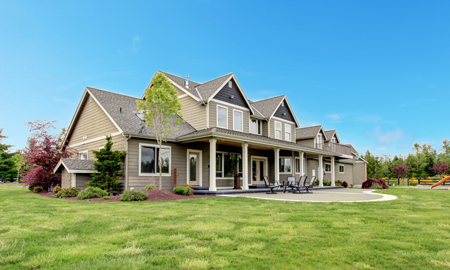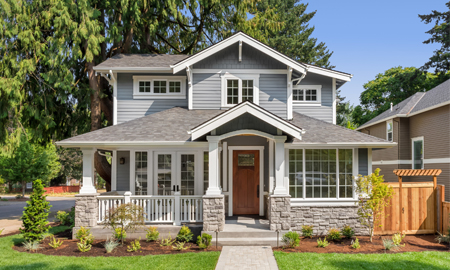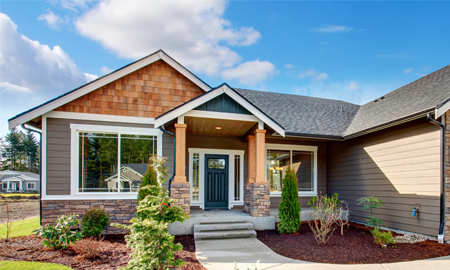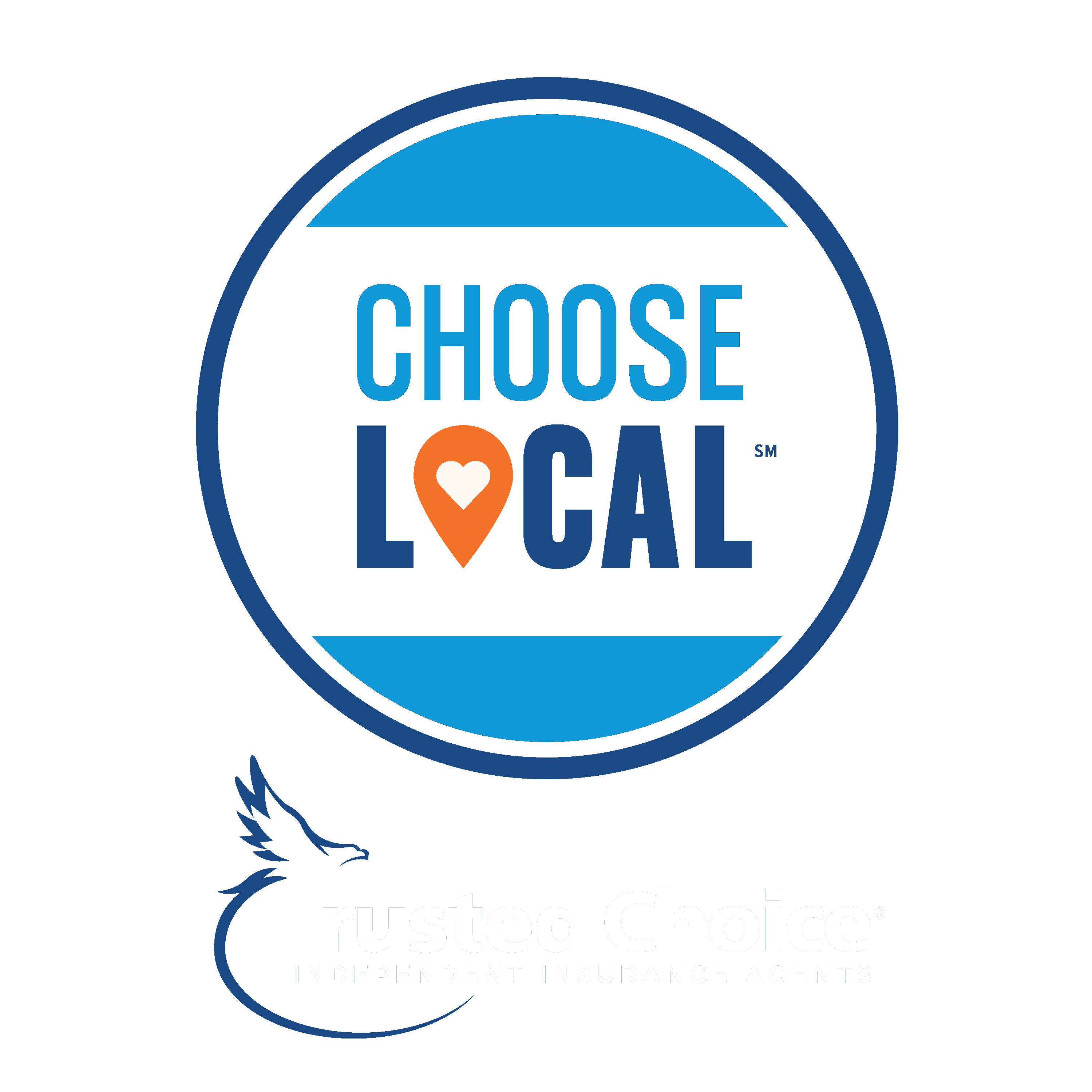Homeowners Protection
What is homeowners insurance?
Homeowners insurance provides financial protection against disasters. A standard policy insures the home itself and your possessions.
Homeowners insurance is a package policy. This means that it covers both damage to your property and your liability or legal responsibility for any injuries and property damage you or members of your family cause to other people. This includes damage caused by household pets.
Damage caused by most disasters is covered but there are exceptions. The most significant are damage caused by floods or rising water, earthquakes and poor maintenance. You must buy two separate policies for flood and earthquake coverage. Maintenance-related problems are the homeowners responsibility.
What is in a standard homeowners insurance policy?
A standard homeowners insurance policy includes four essential types of coverage.
- Coverage for the structure of your home.
- Coverage for your personal belongings.
- Liability protection.
- Additional living expenses in the event you are temporarily unable to live in your home because of a fire or other insured disaster.
The structure of your house
This part of your policy pays to repair or rebuild your home if it is damaged or destroyed by fire, hail, lightning or other disaster listed in your policy. It will not pay for damage caused by a flood, earthquake or routine wear and tear. When purchasing coverage for the structure of your home, it is important to buy enough to rebuild your home.
Most standard policies also cover structures that are detached from your home such as a garage, tool shed or gazebo. Generally, these structures are covered for about 10% of the amount of insurance you have on the structure of your home. If you need more coverage, talk to your insurance agent about purchasing more insurance.
Your personal belongings
Your furniture, clothes, sports equipment and other personal items are covered if they are stolen or destroyed by fire, wind or other insured disaster. Most companies provide coverage for 50% to 70% of the amount of insurance you have on the structure of your home. So if you have $100,000 worth of insurance on the structure of your home, you would have between $50,000 to $70,000 worth of coverage for your belongings. The best way to determine if this is enough coverage is to conduct a home inventory.
Expensive items like jewelry, furs and silverware are covered, but there are usually dollar limits if they are stolen. Generally, you are covered for between $1,000 to $2,000 for all of your jewelry and furs. To insure these items to their full value, purchase a special personal property endorsement or floater and insure the item for it’s appraised value. Coverage includes “accidental disappearance,” meaning coverage if you simply lose that item. And usually there is no deductible.
Liability protection
Liability covers you against lawsuits for bodily injury or property damage that you or family members cause to other people. It also pays for damage caused by your pets. So, if your son, daughter or dog accidentally ruins your neighbor’s expensive rug, you are covered. However, if they destroy your rug, you are not covered.
The liability portion of your policy pays for both the cost of defending you in court and any court awards—up to the limit of your policy.
Liability limits generally start at about $100,000. However, experts recommend that you purchase as much liability protection as you can afford. Some people feel more comfortable with even more coverage. You can purchase an umbrella or excess liability policy which provides broader coverage, including claims against you for libel and slander, as well as higher liability limits. Generally, umbrella policies cost between $100 to $250 for $1 million of additional liability protection.
Your policy also provides no-fault medical coverage. In the event a friend or neighbor is injured in your home, he or she can simply submit medical bills to your insurance company. This way, expenses are paid without a liability claim being filed against you. You can generally get $1,000 to $5,000 worth of this coverage. It does not, however, pay the medical bills for your family or your pet.
Additional living expenses
This pays the additional costs of living away from home if you can’t live there due to damage from a fire, storm or other insured disaster. It covers hotel bills, restaurant meals and other living expenses incurred while your home is being rebuilt. Coverage for additional living expenses differs from company to company. Many policies provide coverage for about 20% of the insurance on your house. You can increase this coverage, however, for an additional premium.


Keep insurance up-to-date
Let your insurer know about alterations, additions and improvements to your home. Major purchases and lifestyle changes such as a marriage or divorce should trigger a call to your insurance
Ask your Insurance Specialist about additional coverages that would customize your policy and needs to protect your biggest investments.
Such as: Replacement cost for possessions Extended or guaranteed replacement cost for the structure Identity Theft Sewer and drain back-ups Inflation-guard Umbrella coverage for a pool or other high-risk items Special riders for jewelry, collectibles and expensive items Should I purchase an Umbrella Liability policy?
If you are ever sued, your standard homeowners or auto policy will provide you with some liability coverage, paying for judgments against you and your attorney’s fees, up to a limit set in the policy. However, in our litigious society, you may want to have an extra layer of liability protection. That’s what a personal umbrella liability policy provides.
An umbrella policy kicks in when you reach the limit on the underlying liability coverage in a homeowners, renters, condo or auto policy. It will also cover you for things such as libel and slander.
For about $150 to $300 per year, you can buy a $1 million personal umbrella liability policy. The next million will cost about $75, and $50 for every million after that.
Because the personal umbrella policy goes into effect after the underlying coverage is exhausted, there are certain limits that usually must be met in order to purchase this coverage. Most insurers will want you to have about $250,000 of liability insurance on your auto policy and $300,000 of liability insurance on your homeowners policy before selling you an umbrella liability policy for $1 million of additional coverage.
Do I need separate coverage for jewelry?
A standard homeowners policy includes coverage for jewelry and other precious items such as watches and furs. These items are covered for losses caused by all the perils included in your policy such as fire, windstorm, theft and vandalism.
However, there are special limits of liability for certain items, meaning that the insurer will not pay more than the amount specified in the policy. One important limit is for the theft of jewelry. To keep coverage affordable because jewelry can be easily stolen, the standard policy has a relatively low limit of liability for theft: $1,500.
If you own valuable jewelry, there are two ways you can increase coverage: by raising the limit of liability or “scheduling” your individual pieces through the purchase of “floater” policies. Raising the limit of liability is the cheapest option; however, there may be a limit on the amount you can claim for the loss of any individual piece, say $2,000, when the overall limit is $5,000.
Scheduling each piece may cost more in premiums, but it offers broader protection because the floater covers losses of any type, including accidental losses—such as dropping your ring down the drain of the kitchen sink or leaving it in a hotel room—that your homeowners insurance policy will not cover. Before purchasing a floater, the items covered must be professionally appraised. The cost of this service varies by county or region according to the risk of theft.
Pool, Wood Burning Stove, etc.
You will need higher property and liability coverage if you are buying a home with features such as a pool or a wood burning stove. In the case of a pool, consider getting additional coverage, such as an umbrella or excess liability policy.
Flood and Earthquake
Damage caused by flooding and earthquakes is not covered by standard homeowners insurance policies. Instead, homeowners will need to pay an additional premium for coverage that is provided through the government’s National Flood Insurance Program (NFIP). To get flood insurance, your community must participate in the NFIP program. Earthquake insurance is offered by private insurance companies or some companies can even add this coverage to your current homeowners insurance.
Tips to keep your Homeowners Insurance premiums down
Ask about available discounts such as:
Multipolicy (home, car or other policies with the same company) Smoke detectors Fire extinguishers Sprinkler systems Burglar and fire alarms that alert an outside service Deadbolt locks and fire-safe window grates 55 years old and retired Long-time policyholder Upgrades to plumbing, heating and electrical systems Earthquake retrofitting to make the home safer Wind-resistant shutters
Take the highest deductible you can afford
The higher the deductible, the lower the premium. On average, most people only file a claim every five to eight years. You will save money over time.
Properly maintain the house
Maintain your home as you would your car. Every year, there are important things you should do to reduce the chance that you will experience water damage, fire or other insured loss. Insurance does not pay for routine maintenance or damage resulting from neglect. The cost for proper care should be calculated into your overall budget. It’s your responsibility to be the “risk manager” for your home. If you do your part to reduce insurance losses, not only will your home be safer, it will also save you money on your insurance bill.
Safety devices
Homes equipped with smoke, fire and burglar alarm systems that alert an outside service may get sizable discounts. Strong doors, dead bolt locks and window locks may also reduce insurance costs.
Construction of the house
If you plan to live near the Atlantic or Gulf coasts, consider a brick home because it is more resistant to hurricanes. If you are buying in a seismically active region, look for newer homes built to current codes, or older homes that have been bolted to their foundations. They are better able to withstand earthquakes.
Age of the house
Older homes sometimes have features such as plaster walls, ceiling molding and wooden floors that could be costly to replace. Such special features may raise the cost of insurance. Also, an older home that has been updated to comply with current building codes is typically less expensive to insure than an older home that is not up-to-date.
Condition of roof and home
If you are considering a “fixer upper,” you may pay more for insurance until clear improvements are made. In particular, check out the condition of the roof. A new roof in good repair will be attractive to insurers and will save you money as well as aggravation.
Plumbing, heating and electrical systems
These systems can wear out, become unsafe with age or become dated as safer technologies are introduced. Recent upgrades make your home safer and less likely to suffer fire or water damage.
Quality and proximity of the fire department
Homes near a fire station, those with a hydrant close by and those located in communities with a professional rather than volunteer fire department will cost less to insure.





